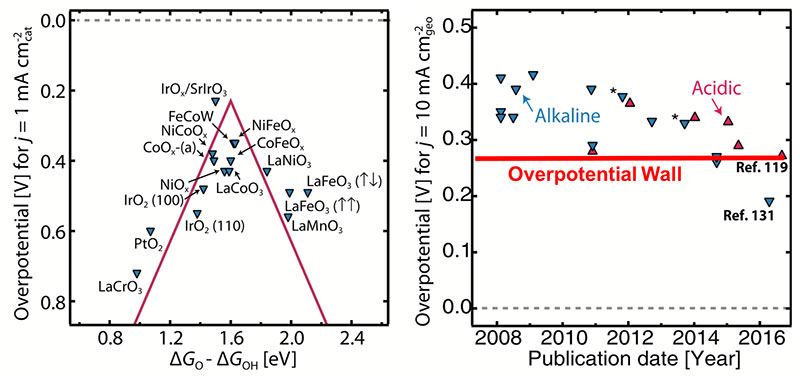Oxygen Evolution
Electrochemical oxidation of water, also known as Oxygen-Evolution Reaction (OER) is the crucial reaction for providing the protons and electrons needed for conversion of electrical energy into fuels and chemicals as part of the sustainable energy economy.
There are two major challenges for current OER catalysts:
I) All known catalysts require high positive potentials (>0.3 above 1.23 V vs SHE) for the onset OER, what is now referred to as the “Overpotential wall” and
II) Acidic electrolytes
severely limit the type of available electrode materials to only rare and expensive IrOx with no known earth-abundant alternatives.
The joined theoretical and experimental efforts in the application of OER at SUNCAT are therefore closely focused on discovering new highly active OER catalysts and replacing or functionalizing IrOx with earth-abundant elements and for acid-stable OER. Additionally, we closely developing the theory of electro-chemical interface for improved description of reaction mechanism and kinetics of OER. The particular systems of interests are rutile-oxides, perovskites and layered oxy-hydroxides (i.e. layered double hydroxides) including their nanostructured alternatives. Experiments make use of latest methods in catalyst synthesis and electrochemical testing, and operando spectroscopic methods.

